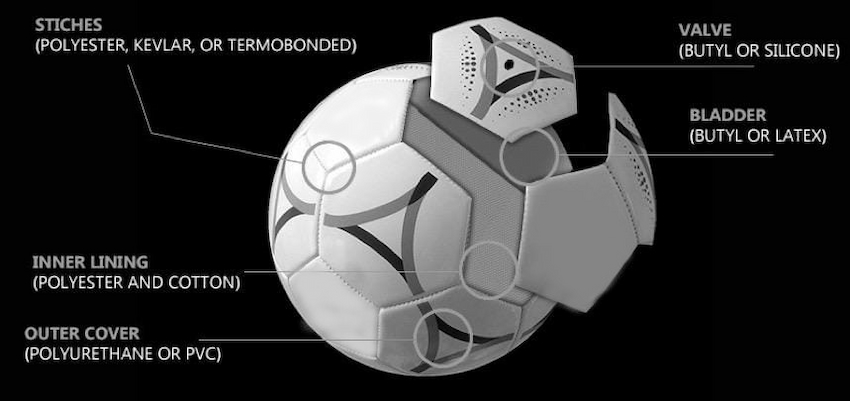When it comes to finding the right soccer ball, there is a wide range of options to choose from. With such a wide range of brands that differ between themselves in the quality of soccer balls they offer, it may be a challenge to select the right one for your needs. Soccer balls come in a wide range of sizes, materials, and weights. To help you narrow down your search, we’ve made a list of some important steps you need to follow that should help you in finding the perfect soccer ball for your needs.
What Should I Look For in a Football Ball?
Choose a Reputable Brand
If you have no idea where to start from, it’s always best to find a reputable brand that produces high-quality soccer balls and other football essentials. One of the best brands on the marketplace trusted by many famous football clubs not only in Australia but all around the globe is Kappa. Here you can explore a wide range of soccer balls available as well other clothing essentials such as footwear, jerseys, shirts, etc. During certain periods of the year, this brand offers many discounts on its products so can buy many of your favorite football balls for sale.

Buy in Regular Shops Vs Online Football Shops
Usually, the most indicative factor that tells you about the quality of a soccer ball is its price. Therefore, many people choose to buy good quality football balls online from some of the recognized brands on the market, or the wide range of many regular football shops. However, the price isn’t always a decisive feature for the quality as you you can also find some cheaper football balls for sale that offer perfect durability and performance for the money.
Pick the Right Type of Ball for Its Intended Use
Whenever you decide to buy a soccer ball you should be mindful of the type of play for which it will be most often used. These may include occasional fun games, regular training, or official matches. Accordingly, you can wide different types of soccer balls such as premium balls, training, and match balls.

Match balls follow official size, shape, and weight regulations and are specially designed for game plan training. They are usually hand-stitched and use a thicker layer of foam under the PU cover. Combined with a softer bladder type, match balls have an excellent touch when receiving, passing, and shooting. Training balls have more varieties and are built with durability in mind. They are meant for practice and recreational use in a variety of playing environments.
Compared to these two, premium soccer balls are the most expensive because they are made from the highest-quality materials and are constructed using the best techniques and technology to maximize the players’ natural abilities and performance on the field.
Select the Right Material
The material that makes up the casing of the ball is an essential factor to consider as well. You can choose from a PVS casing which makes the ball harder and durable. PU casing on the other hand is higher in quality, softer to the touch, and significantly more responsive. The most common panel construction of professional soccer balls is 32 panels, but some modern newer renditions balls can have an 18 or 26-panel design to provide players with the most seamless feel. Soccer balls of the highest quality have their panels hand-stitched. Machine-stitching is usually found on middle-quality balls, while low-quality football balls which are mostly used for training and recreation, often have their panels glued or molded which creates a harder feel.
Bladder Type
While the casing provides the outer shell of the ball, the bladder is a compartment or the inside of the ball that holds the air. There are two main types of bladders used in the construction of soccer balls: latex and butyl.

Latex bladders are softer, to the touch, and they do not hold air as well as butyl, therefore they require more frequent inflation. You can get great touch and responsiveness on the ball with a latex bladder. Some manufacturers are trying to solve this problem, and they currently add a butyl valve on the latex bladder to help them retain air. Butyl bladders have much higher air retention but are slightly heavier and harder than latex bladders. They are manufactured using a combination of butyl and rubber.
Pick the Right Size
Once you’ve made these decisions, you must consider the right size of the soccer ball. Finding the right ball size based on age group can be beneficial. However, to make sure you purchase the right size, it’s best to consult your coach or league official.
Soccer balls come in four different sizes ranging from size 1 often called a mini ball to size 5, which is the size used by most players over the age of 12. Typically, size 4 soccer balls are most often used by youth players in the 8-12 age range. Size 1 soccer balls, also known as mini soccer balls or skills balls, are mostly used by small children under the age of 5 to improve footwork or just for fun.
